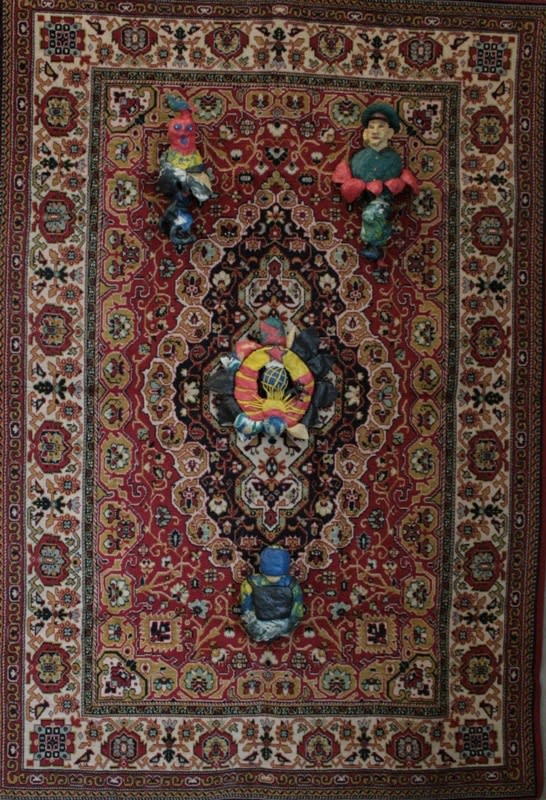The carpet is the message: Curator Maria Kravtsova
Is a carpet an attribute of a philistine household, or a work of art? Is it just an item, or is it a key to national and cultural traditions? The participants of a new joint project of art center Gridchinhall and decorators’ atelier Mark Patlis sought answers to these questions. At the exhibition works by contemporary artists who use carpets and textile technologies in their oeuvre are found side by side with exquisite handwork from the Caucasus, Europe and Middle East. Traditional and modern art of carpet-making interact smoothly with each other in a complimentary manner within the framework of the same project.
In the Soviet era a carpet was a sign of wealth and affluence, a “must have” thing, a sought after luxury item that was in scarce supply, just as Yugoslavian wall cabinet or East German porcelain dinner service. For many our contemporaries this object of interior design still remains a symbol of comfortable life. For others, for example, for artist Alladin Garounov, woolen carpet weaving with a typical oriental pattern serves as a reminder that modernity is in many respects shaped by tradition, and Faig Ahmet sees it as a space for post-modernist play.
The selection for the exhibit included works of artists who address the traditional decorative applied art for different purposes. According to Curator Maria Kravtsova, the Gridchinhall project focuses on the message inherent in this household object, and on the interpretation of the carpet by contemporary artists. Apart from the above authors, it is worthwhile mentioning Tahir Salakhov, whose latest works are connected with carpet weaving and textile, as well as group AES+F and with its famous “Islamic Project”, where the images of future fully Islamized Europe and America were fit into a medium traditional for Islamic world – the carpet.
The visitor of the exhibition will find himself in a synthetic space. Simultaneously with contemporary artists’ works he will see some sublime samples of artistic handicraft ─ antique Caucasian carpets and works of modern carpet manufactories from the collection of Mark Patlis, specialist on old carpets and tapestries.
Mark Patlis: “In carpets, like in paintings, everything is based on colour combinations. Such monsters in the field of art philosophy as Malevich and Kandinsky knew very well what the natural scale meant. Nature’s color combinations are always correct. They are stored in our genetic memory and communicate with people directly.”
Partner:

Media-partners:





















